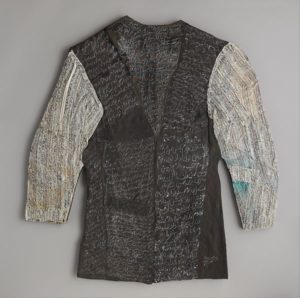Iranian Artist Spotlight – Siah Armajani
Siah Armajani: Architect and Conceptual Artist
Like many of his peers who came of age in 1950’s Iran, Siah Armajani’s body of work is a direct response to the influence of politics and exile on his understanding of space and place. From his early works created as a student activist in Tehran to his later works constructed as a professor in America, the implication of politics is always central to the theme.
Armajani was born in 1939 in Tehran. He had decided that he wanted to be an artist by the age of seven. Following in the artistic traditions of Persian calligraphy, his father signed him up to take lessons from a master. He lasted 6 months in his apprenticeship, but the skills that he gained can be seen throughout his body of work. Many of his early pieces, such as Shirt #1, also reference another cataclysmic event that took place in his youth – the Iranian political movement created by prime minister Mossadegh who was ousted from power shortly after nationalizing the country’s oil in 1952. This jacket fabricated from cloth, pencil, ink, and wood displays spiritual texts, folklore, and verses of Hafez that Armajani inscribed onto the lining of his father’s suit. Armajani also includes concealed notes that express his sense of urgency for political change.
Another seminal and controversial fabrication is Armajani’s 2004 work entitled Fallujah. In every iteration, a glass house is on fire and in disrepair. Armajani is making a controversial political statement about the Iraq War with this study. Taking inspiration from the message behind Picasso’s antiwar painting Guernica, Armajani includes some of his original elements such as the rocking horse and light bulb.

Armajani’s installation Bridge Over Tree was first exhibited in a Minneapolis park in 1970, and for the first time since, it has been recreated in Brooklyn Bridge Park. Armajani fabricates a seemingly traditional American bridge, except for a sharp peak in the center of the processional hall. An evergreen is planted in the hollow space shaped by the peak. This unusual form invites one to interact with Armajani’s original perspective on what the experience of a bridge can be. Once again, he subverts what is deemed normal in an elegant way.
Spanning decades, Siah Armajani’s works are always beautiful and thought provoking. Visit this New York Times to delve deeper into the life and mind of this beloved artist.



